Authors:
ABSTRACT
Aim
To compare the effects on permanent or deciduous anchorage dental units in patients treated with a digitally designed palatal expander.
Methods
Inclusion criteria were the following: presence of maxillary transverse deficiency, no previous orthodontic treatment, no extractions, absence of agenesis, congenital pathologies and cranio-maxillofacial malformations. Twenty patients (11 males, 9 females, 11 ± 1.8 years) received a digitally designed and metal printed palatal expander anchored on first permanent molars and 1 activation per day for 30 days (Group 1). Twenty-one patients (12 males, 9 females, 8.6 ± 1.4 years) received a digitally designed and metal printed palatal expander anchored on second deciduous molars and 2 activations per day for 14 days (Group 2). Digital intraoral scans were taken before expansion and after device removal, and torque and the palatal transverse diameter were digitally measured. The FDI notation was used to indicate each tooth
Results
Significant intragroup differences over time were found in Group 1 considering the torque of teeth 1.6, 1.4, 1.3, 2.1, 2.4, 2.5, 2.6. Significant differences between groups were found regarding the longitudinal change in torque of teeth 1.5, 2.4 and 2.5. Significant intragroup differences over time were found in both groups considering all transverse diameter parameters. No significant differences were found between groups in the transverse diameter modifications over time.
Conclusion
Less dental torque augmentation was produced in Group 2.
Study Design and Statistics
Retrospective controlled study on consecutively treated patients.
Intragroup differences over time were tested by the Paired t-Test or Wilcoxon’s signed rank test. To investigate the association of differences over time with groups, the Student’s t-Test and Mann-Whitney U test were performed.
PLUMX METRICS
Publication date:
Issue:
Vol.24 – n.4/2023
Page:
Publisher:
Topic:
Cite:
Harvard: S. Drago, A. Campobasso, G. Battista, A. De Mari, M. Menini, M. Migliorati (2023) "Torque changes of anchorage units in preadolescent patients treated with a digitally designed tooth-borne expander anchored to deciduous vs. permanent molars", European Journal of Paediatric Dentistry, 24(4), pp297-303. doi: 10.23804/ejpd.2023.1933
Copyright (c) 2021 Ariesdue

This work is licensed under a Creative Commons Attribution-NonCommercial 4.0 International License.
